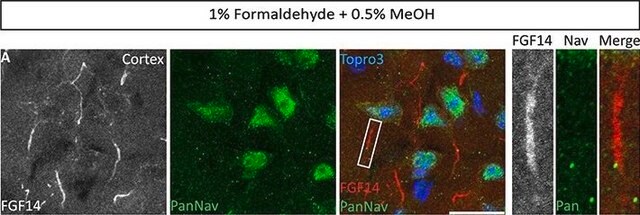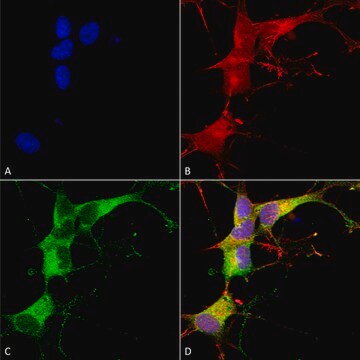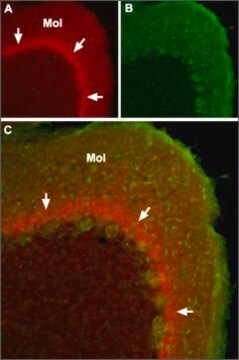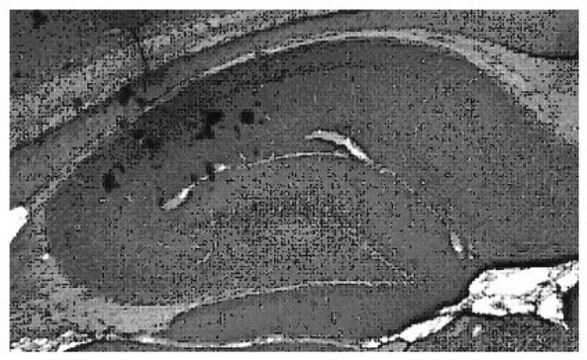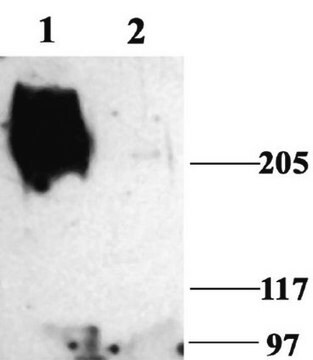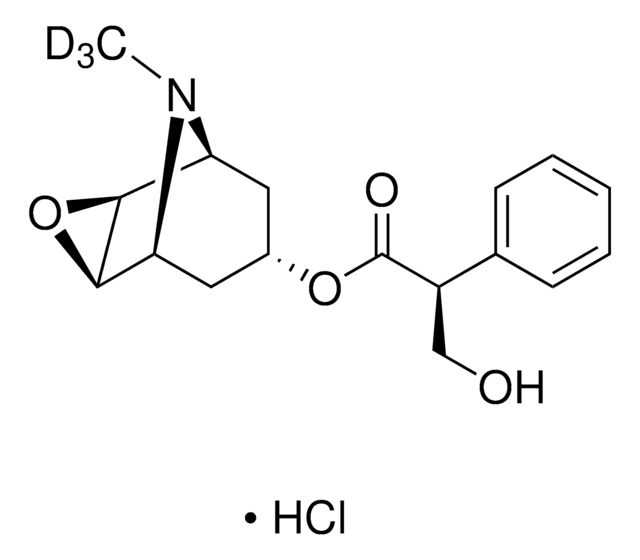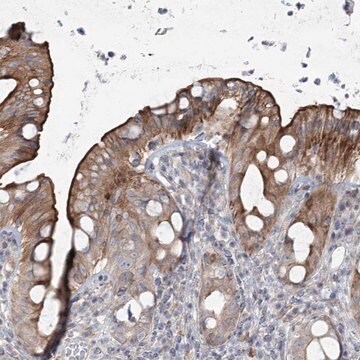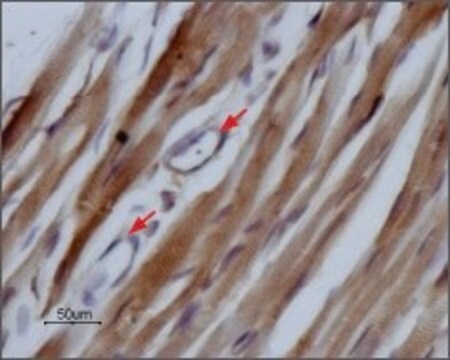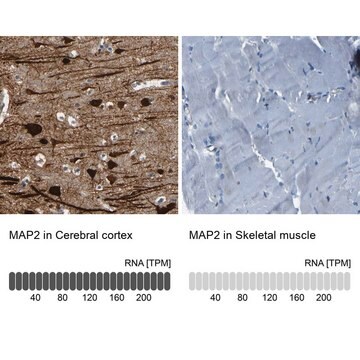S8809
Monoclonal Anti-Sodium Channel, Pan antibody produced in mouse
~1 mg/mL, clone K58/35, purified immunoglobulin
Sinonimo/i:
Sodium Channel Antibody
About This Item
Prodotti consigliati
Origine biologica
mouse
Livello qualitativo
Coniugato
unconjugated
Forma dell’anticorpo
purified immunoglobulin
Tipo di anticorpo
primary antibodies
Clone
K58/35, monoclonal
Reattività contro le specie
mammals
Concentrazione
~1 mg/mL
tecniche
immunohistochemistry (frozen sections): suitable
indirect immunofluorescence: 1 μg/mL using sciatic and optic nerve sections; cultured hypocampal neurons
western blot: 1 μg/mL using crude brain membrane prep (rat)
Isotipo
IgG1
N° accesso UniProt
Condizioni di spedizione
wet ice
Temperatura di conservazione
−20°C
Informazioni sul gene
human ... SCN10A(6336) , SCN11A(11280) , SCN1A(6323) , SCN2A(6326) , SCN3A(6328) , SCN4A(6329) , SCN5A(6331) , SCN8A(6334) , SCN9A(6335)
mouse ... Scn10a(20264) , Scn11a(24046) , Scn1a(20265) , Scn3a(20269) , Scn4a(110880) , Scn5a(20271) , Scn8a(20273) , Scn9a(20274)
rat ... Scn10a(29571) , Scn11a(29701) , Scn1a(81574) , Scn3a(497770) , Scn4a(25722) , Scn5a(25665) , Scn8a(29710) , Scn9a(78956)
Descrizione generale
Specificità
Immunogeno
Applicazioni
- immunohistochemistry(1:50)
- immunostaining (1:200)
- immunofluorescence
- immunocytochemistry (1:100)
Azioni biochim/fisiol
Stato fisico
Note legali
Esclusione di responsabilità
Non trovi il prodotto giusto?
Prova il nostro Motore di ricerca dei prodotti.
Raccomandato
Certificati d'analisi (COA)
Cerca il Certificati d'analisi (COA) digitando il numero di lotto/batch corrispondente. I numeri di lotto o di batch sono stampati sull'etichetta dei prodotti dopo la parola ‘Lotto’ o ‘Batch’.
Possiedi già questo prodotto?
I documenti relativi ai prodotti acquistati recentemente sono disponibili nell’Archivio dei documenti.
I clienti hanno visto anche
Il team dei nostri ricercatori vanta grande esperienza in tutte le aree della ricerca quali Life Science, scienza dei materiali, sintesi chimica, cromatografia, discipline analitiche, ecc..
Contatta l'Assistenza Tecnica.
